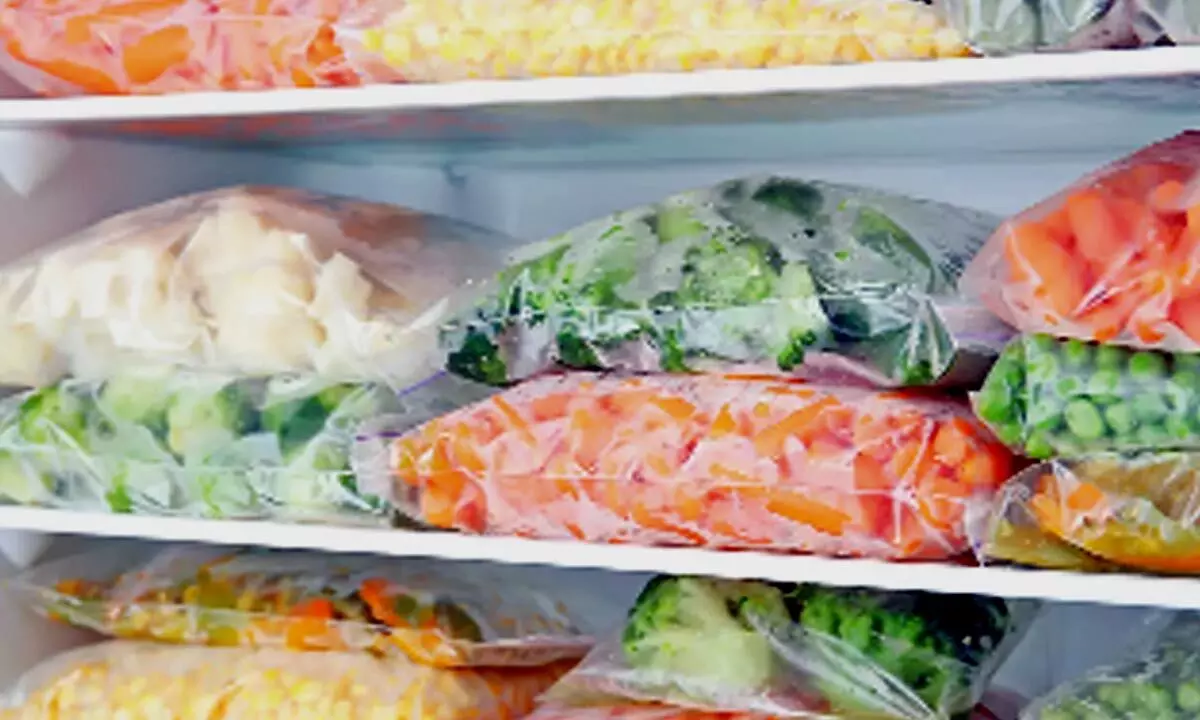How growing popularity of frozen food changing face of food market in India
The desire for convenience and the pace of life has led semi-urban and urban populations to turn to ready-to-cook and heat-and-eat meals
image for illustrative purpose

According to analysts and research, the frozen food market was Rs99 bn in 2020 and by 2025, the market is projected to grow at a compound annual growth rate of 18.17% to Rs225 bn
Until a few years ago, this concept was unthinkable and an alien notion in India. However, now it has become a mainstream food trend which is dominating the Indian food market. There was a time when frozen food was only synonymous with desserts like ice creams or some imported frozen fruits that multinationals catered to the Indian market, but this has changed dramatically in the last few years as we are witnessing its exponential growth and popularity among Indian consumers.
According to analysts and research, the frozen food market was Rs 99 billion in 2020 and by 2025, the market is projected to grow at a compound annual growth rate of 18.17 per cent to Rs 225.00 billion.
So we can witness India has only been consuming frozen foods for a relatively short time. However, their popularity is growing as time passes. The desire for convenience and the pace of life has led semi-urban and urban populations to turn to ready-to-cook and heat-and-eat meals with their increasing disposable incomes, lack of time, and both partners working.
Additionally, I see that there are a number of other factors driving the growth of the sector. And for For that reason, I can see that food waste is becoming an increasingly big issue in today's society, particularly among consumers who are seeking to eat healthier and adopt sustainable practices. There is a growing culture of nuclear families not only in metropolitan cities, but also in tier 2 cities. Most nuclear families find it difficult to prepare food for two people and prefer to eat out or shop largely for frozen items.
Another factor contributing to the growth and popularity of frozen foods is their easy accessibility through online or offline channels. Besides the factors listed above, there have been many others contributing to the growth of the segment. Frozen products can be used to make a delicious meal in a matter of minutes. Young people are always exploring and experimenting, and cooking delicious foods with frozen options is easy. In an age when most women work and live on their own, frozen meals are a good option for them, since they add a whole new dimension to every meal.
During the Covid era, frozen foods continued to be popular because of their convenience and affordability. People preferred storing frozen food rather than visiting vendors frequently. Frozen food was preferred by households without help.and frozen meals became an obvious choice and an option too. Meatington offers the largest selection of Frozen food that caters to vivid palates.
As a result of the popularity and growth of these products, they are available in a large variety with excellent taste, variety, and range. We are seeing a wide selection of frozen fruits and vegetables, as well as ready-to-eat frozen foods. Besides imported brands, there has been a surge of Indian brands who have entered the sector and are catering to the tastes of Indians. Various frozen food products, such as finger foods, frozen snacks, potato-based products, frozen meats, fish, etc., have altered the market landscape.
For the first time, snacks, finger food, combo meals, and options in main courses are available with Meatington as well as Grab a Green. There is a vegetarian and a non-vegetarian category, and they are fast becoming part of every household despite cultural preferences and diversity.
Evolution in terms of manufacturing and packaging to keep the food fresh
Food packaging and manufacturing has been constantly evolving to keep food fresh and nutritious. With new technologies being researched and incorporated into the way food is packed, it is becoming easier for the industry to produce tasty and healthy options that remain fresh for long. This also eliminates the scope of adding preservatives, colours or other additives. I understand this personally since I'm a manufacturer.
Meatington has provided innovative recipes and easily adapted to changing market conditions. Our state of the Art packaging keeps our product safe with all nutritional values intact. To keep the product fresh we have used state of the art packaging according to which the inner pack for our product is vacuum Packed so that there is no contamination at optimum freezing temperature in the freezers. It is then packed in a reusable double lined ziplock pouch which helps the consumer to open, use a small quantity, and then Store the remaining product back in the freezer.
With all of the factors mentioned above it can be said that, although the frozen food market is relatively untapped, the potential for growth is immense. Once the cold chain system which is a challenge in India is well established, frozen food can reach every corner of the country, including remote areas. With this the prices will fall and availability will be improved. Interest in Indian frozen food is phenomenal on the global market as well. Given that half of the world is occupied by India, global economic growth is also burgeoning.
This will lead to a high demand for frozen food in India. Exports are rising in India too owing to the government's support for the industry and Indian food and tastes crossing global boundaries.
(The author is Founding partner of Meatington & the High Life Cuisine)

